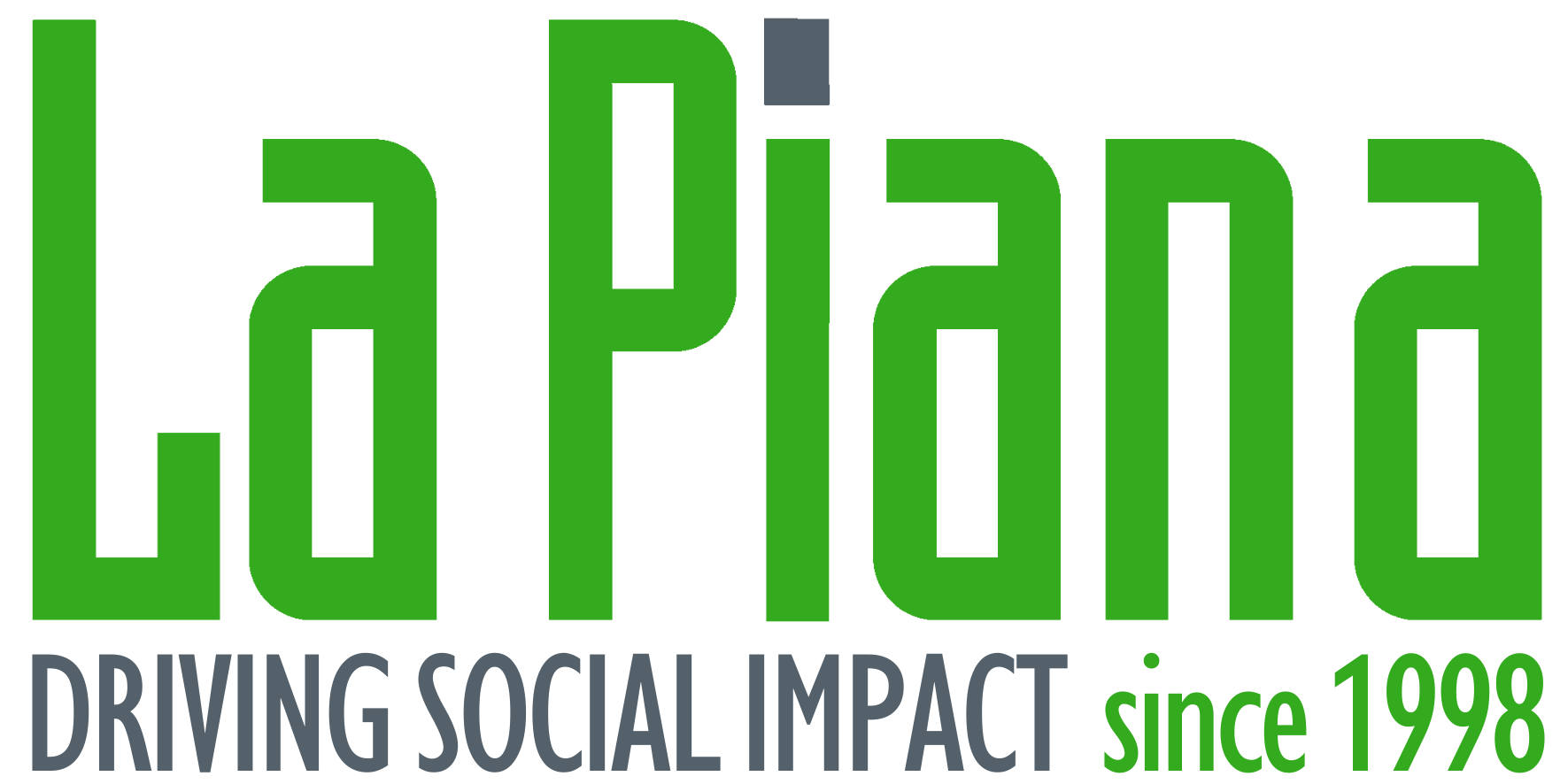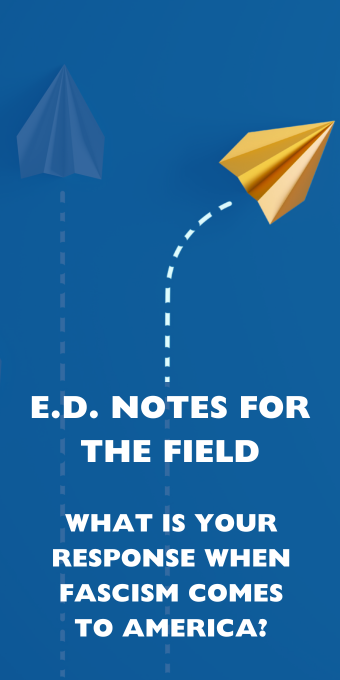E.D. Notes for The Field: What is your response when fascism comes to America?
At its heart, leadership is about making choices. Your values and priorities — and who you are as a leader — are reflected in where you spend your time. For example, you probably focus more on those challenges you think are most important; the people you hire reflect the skills, values, and attributes you want on your team; and the projects you devote your always-limited resources to are those you think most impactful for your organization’s mission. Make no mistake, as you make these choices — especially today — your board members, staff, and peers are watching.
So, what do you do — what message do you send by your words and actions — when your life’s work, the field and community and mission you have devoted yourself to, is under assault? If it were “only” that, the answer would be straightforward. You’ve faced threats and attacks before. But what do you do when the attacks on your organization or community are just one part of a broader assault? Again, if it were “just” the nonprofit sector under attack, you would probably know what to do. Local and field coalition-building and work with national advocacy organizations would be a natural response. But how do you lead when the attack you face is part of a larger attack on the fabric of our democracy?
What is your response as the leader of a social sector organization when fascism comes to America? I’ve never been one to throw loaded terms like this around, and we’re not there yet, but we’re clearly on the road to autocracy, and with each passing week we seem to have fewer offramps. I’ve worked in the social sector since 1980, surviving The Reagan Revolution, Clinton’s mass incarceration program, the Bush wars, Obama’s “deporter-in-chief” days, Trump 1.0, and of course Biden’s support for the destruction of Gaza. Through it all, the rule of law largely held. We may not have liked what our government did, but there were guardrails and institutions and public servants and checks and balances to slow and bound executive action. All of that is now crumbling before our eyes.
I’ve always felt a leader’s most important attribute is belief in yourself — in your competence, basic decency, moral compass, and deep experience in the work. Beyond that, your most important asset is the people around you, including family, friends, colleagues, staff, volunteers, board members, and E.D. peers. You’ve likely faced all manner of adversity, from funding cuts to difficult board members, from sudden spikes in work to the reality of raising a family on substandard pay. As you face the unknowns of 2025, that belief in yourself and your community, and a track record of navigating these adversities, will serve you well. In fact, it is more important than ever.
But the crisis of 2025 may call on all of us for more, for choices we have never before faced. Fields such as public health, public media, immigration, family planning, and the arts may be under direct threat from the government, creating an existential threat to whole segments of civil society. We termed three possible choices leaders face in these circumstances as Hold on, Merge, or Close. But even those organizations not in the Administration’s crosshairs face an unprecedented challenge and a stark choice: how will you respond — with your entire constituency watching — to the assault on our way of life?
I’ve spoken with a nonprofit leader who said they are hoping to keep a low profile — that their issue and organization will not rise to the attention of DOGE, Trump’s unelected billionaire henchmen — hoping to avoid an onslaught.
I’ve spoken to several leaders who don’t plan to change what they do but who are de-risking their website, grant proposals, and public statements, removing words and phrases that could trigger an attack.
And I’ve spoken to one leader who realizes that when you are in the crosshairs, sometimes the best defense is a good offense.
Whatever approach is right for your organization, it is a choice you will have to lead it in making.


Comment section